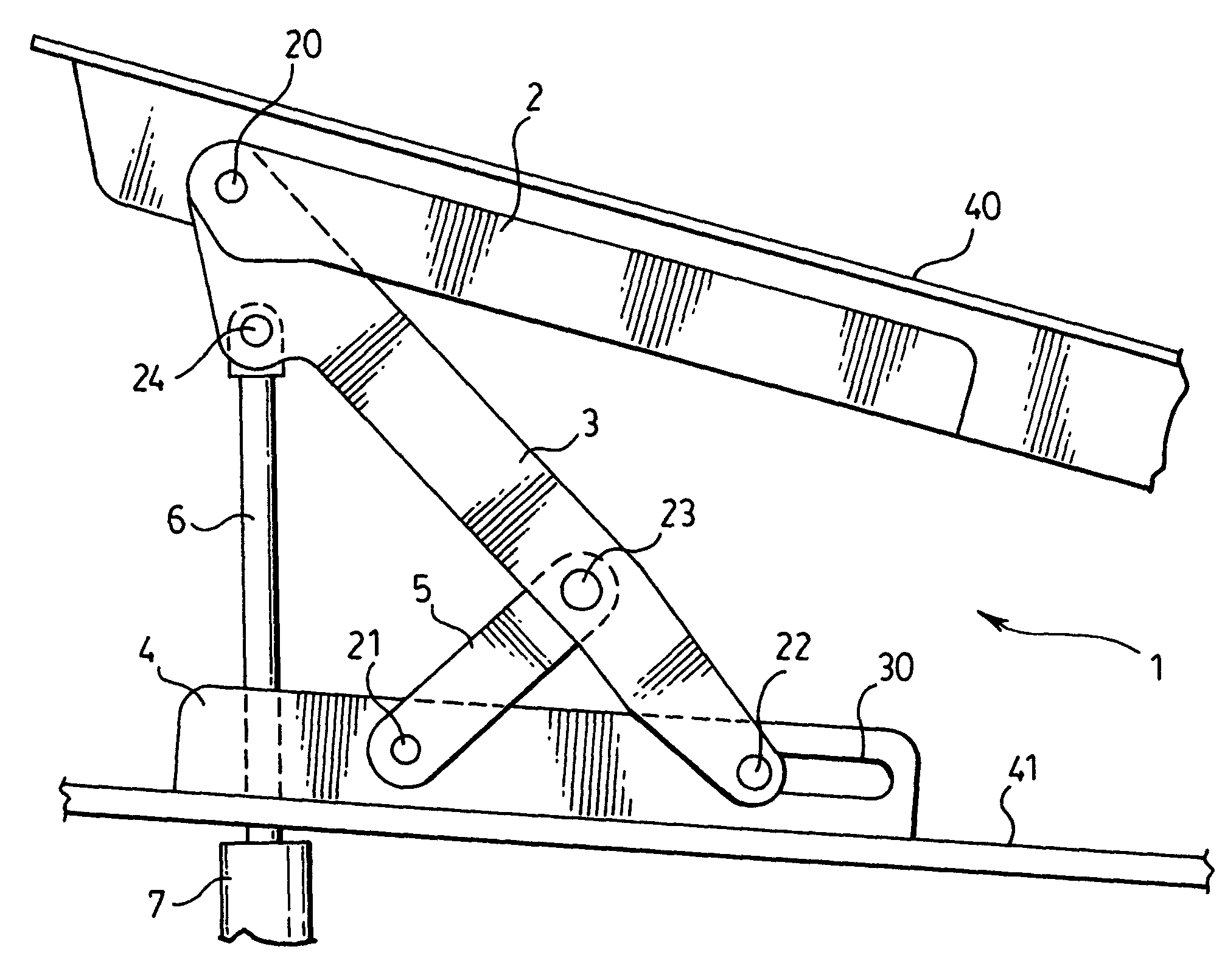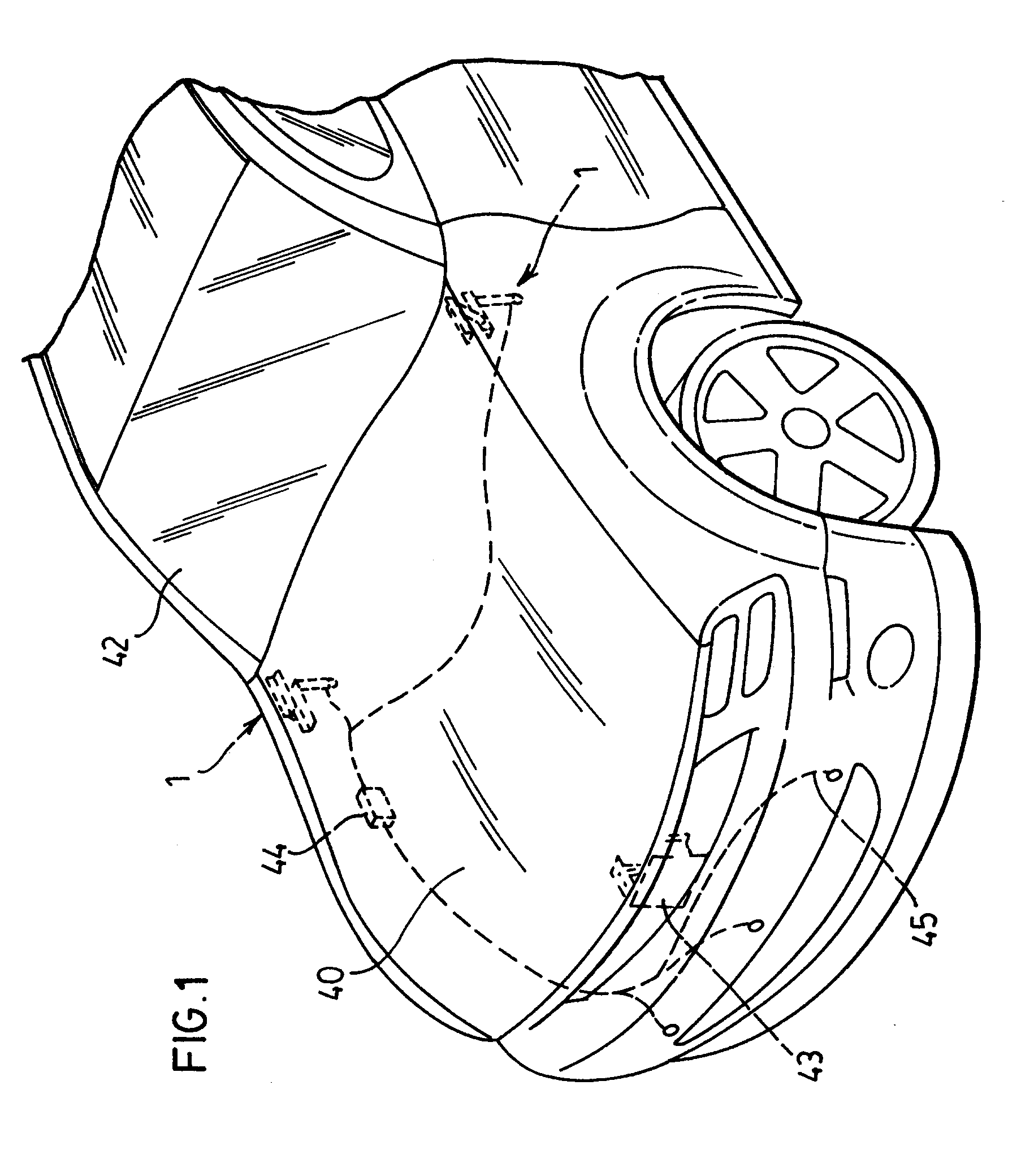Pedestrian protection automotive hood hinge assembly
a technology for pedestrian protection and automotive hoods, applied in the direction of roofs, pedestrian/occupant safety arrangements, tractors, etc., can solve the problems of not providing a method of stabilizing or guiding the hood once, failing to describe any method of resetting the system after deployment, and the highest risk of serious upper body and head injuries, etc., to achieve the effect of simple and intuitiv
- Summary
- Abstract
- Description
- Claims
- Application Information
AI Technical Summary
Benefits of technology
Problems solved by technology
Method used
Image
Examples
Embodiment Construction
[0028]Referring to FIGS. 1, 2, 3 and 4, a hood hinge assembly (1) is substantially constructed from a hood component (2), a main link component (3) and a body component (4). The hood component (2) is configured with a main pivot joint (20) and is rigidly attached to a vehicle hood (40) using bolting, welding, bonding or similar fastening means. The body component (4) is configured with an anchor slot (30) and an anchor pivot joint (21) and is rigidly attached to a vehicle body (41) using bolting, welding, bonding or similar fastening means, The main link component (3) is adapted to be rotatably attached to the hood component (2) at its main pivot joint (20) via a main bushing (50) and main rivet (51) or similar means. The main link component (3) is also configured with an anchor end joint (22) that is adapted to be constrained by the anchor slot (30) of the body component (4) via a sliding rivet (52) and sliding bushing (53) or similar means. A control link (5) is adapted to be rota...
PUM
 Login to View More
Login to View More Abstract
Description
Claims
Application Information
 Login to View More
Login to View More - R&D
- Intellectual Property
- Life Sciences
- Materials
- Tech Scout
- Unparalleled Data Quality
- Higher Quality Content
- 60% Fewer Hallucinations
Browse by: Latest US Patents, China's latest patents, Technical Efficacy Thesaurus, Application Domain, Technology Topic, Popular Technical Reports.
© 2025 PatSnap. All rights reserved.Legal|Privacy policy|Modern Slavery Act Transparency Statement|Sitemap|About US| Contact US: help@patsnap.com



